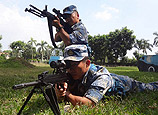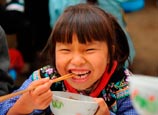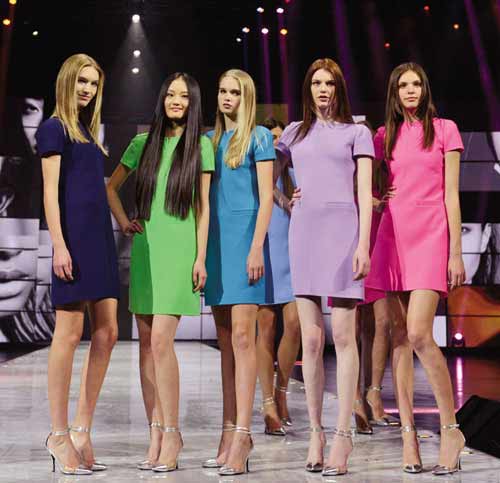
"Woodprints from the school's early stages feature bold carved lines, full compositions and rich colors," Yu says.
The arrival of zhiqing — educated youth sent to labor in the countryside during the "cultural revolution" (1966-76) — broadened the motifs. This period's works still feature such commonplace subjects as farmlands, tractors and oil deposits but also show new concern about humanity.
One representative piece on display is Morning Dressing by Zhang Chaoyang.
The work shows a girl standing in front of a tent used as a temporary residence for zhiqing, using a tractor's window as a mirror to braid her hair. While her back is facing viewers, her face can be seen in the reflection.
The print deviates from the widely adopted approach of expressing heroism and enthusiasm. It instead shows an appreciation of a woman's beauty and conveys a sense of tranquility.
"We can see Beidahuang prints have absorbed a growing number of elements over the past three decades," Heilongjiang Art Museum director Zhang Yujie says.
"The rising artists include the children of those pioneers, who were born and raised in Beidahuang. Their works demonstrate a sweet attachment to their homeland and their idyllic lives."
















 Residential building collapses in E China's Ningbo
Residential building collapses in E China's Ningbo


![]()
